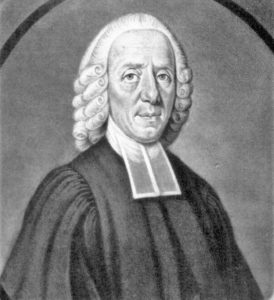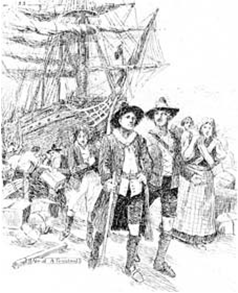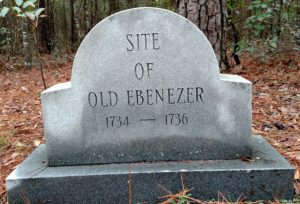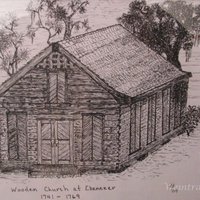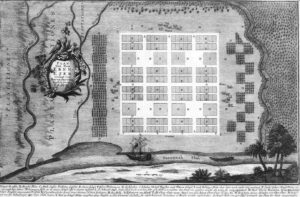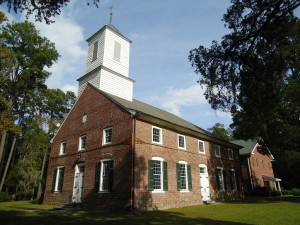The Salzburgers
One of the great displacements of people and migrations in European history occurred in 1731-32 when 20,000 Protestants were expelled from the country of Salzburg, which today is a province of Austria. Salzburgers living in mountain valleys and villages for two hundred years – since the time of the Reformation – had been “underground Protestants.” Finally in 1731-32, they were forced to leave the land. This act of religious intolerance occurred when Archbishop Leopold von Firmian issued his Edict of Expulsion on October 31, 1731, forcing the Salzburger Protestants into exile. Traveling bands of the exiles sought refuge in southern German towns, such as Augsburg, Regensburg, Memmingen, and Lindau. Learning the plight of the Salzburger refugees, King Frederick William I of Prussia extended an invitation to the exiles to settle in East Prussia on the Baltic Sea, and approximately 16,000 did so. However, many of the exiles died – perhaps as many as 4,000 – either traveling from Salzburg during the winter months of the expulsion or later on the long journey to East Prussia.
Also, from the British King George II came an invitation to the exiles to settle in the new colony of Georgia. There was acceptance of the proposal by some of the Salzburgers, and during October 1733, Dr. Samuel Urlsperger, the Senior Pastor of St. Anna’s Lutheran Church in Augsburg, Germany, organized a  group of the banished Protestants to settle in Georgia. Thus begins the identity of the “Georgia Salzburgers.” A small group of these refugees, led by a young Hanoverian nobleman, Baron Philip Georg Friedrich von Reck, left Augsburg on October 31, 1733 – the anniversary of the Reformation – traveling initially to Rotterdam in Holland. There they first met their pastors, Johann Martin Boltzius and Israel Christian Gronau, who had traveled from an orphanage and school foundation in Halle, Germany, to join the Salzburgers on their voyage to Georgia.
group of the banished Protestants to settle in Georgia. Thus begins the identity of the “Georgia Salzburgers.” A small group of these refugees, led by a young Hanoverian nobleman, Baron Philip Georg Friedrich von Reck, left Augsburg on October 31, 1733 – the anniversary of the Reformation – traveling initially to Rotterdam in Holland. There they first met their pastors, Johann Martin Boltzius and Israel Christian Gronau, who had traveled from an orphanage and school foundation in Halle, Germany, to join the Salzburgers on their voyage to Georgia.
For the Atlantic crossing the little travel group, which became known as the First Salzburger Transport, boarded in Rotterdam a merchant ship named the Purysburg. Von Reck made an enumeration of those in the transport who boarded the ship: His count totaled forty-five people of which he identified thirty-two as Salzburgers. He also noted that they came from the districts of the Pongau and the Pinzgau. In addition to the Salzburgers, there were eleven “other Germans,” one Tyrolean, and a French baker.
After stops in England and Charleston, South Carolina, the Purysburg, finally reached Georgia, and the Salzburgers came ashore on March 12, 1734, when the new colony was only thirteen months old. They came to be permanent settlers: They arrived with two pastors, a school teacher, and an apothecary, their health care provider. The new colonists founded a town named Ebenezer – a Biblical name meaning “stone of help.” The settlement was located first near the bend of a creek also named Ebenezer. The place, approximately five miles from the Savannah River, was situated on an old trading path of the native people – a site that had strategic importance, because a town at this location would serve as a buffer for Savannah in the event of an attack from the north by hostile natives or a backdoor assault by the Spaniards from Florida. However, the location was a disaster for the Salzburgers: The land was of inferior quality for farming, which led to crop failures. Another problem was the creek flooded periodically, submerging part of the town and its fields; the creek also proved to be non-navigable. Life at Ebenezer was brutal: There was much illness and many of the original settlers died during the first years. In the spring of 1736, when the settlement was just two years old, the Salzburgers abandoned the place and relocated the town of Ebenezer on the Red Bluff of the Savannah River. Thereafter, the first settlement and its site became known as Old Ebenezer, while the new town was named New Ebenezer, or simply continued to be called Ebenezer.
Additional groups of Salzburgers continued to arrive in the colony: The second transport came in December of 1734, a third transport in 1736, and finally, the fourth transport in 1741. Additionally, other transports of Germans from various places in the German-speaking world also came to Georgia. By the 1750s Ebenezer was a thriving colony of German-speaking people, many living in Ebenezer’s satellite communities, which had Biblical names as Zion, Bethany, and Goshen. Each of these communities also had a church and a school.
The community of New Ebenezer flourished with a number of successful economic enterprises that included Georgia’s first grist mill, the colony’s first successful sawmill (lumber became an export industry not only for Ebenezer, but also for Georgia), and also one of the colony’s two silk filatures was located at Ebenezer. In the filature, the Salzburgers grew silk worms and spun silk that was shipped to England. Farming became a successful and necessary pursuit for a number of Ebenezer’s inhabitants. The Salzburgers were especially successful in cattle breeding, and Dr. George Fenwick Jones, the foremost historian of the Georgia Salzburgers, commented in The Salzburger Saga: “Cattle raising was the most successful enterprise at Ebenezer” (page 66).
The Salzburger church congregation organized in Augsburg, Germany, in October of 1733 continues to exist today as Jerusalem Lutheran Church, and its house of worship is the only building in Ebenezer that remains from the colonial period. Erected in 1767-69, the red brick edifice is the oldest church building in Georgia. The congregation – still holding services every Sunday morning – is the oldest continuing Lutheran congregation in America worshiping in the same building.
The story of the Salzburgers coming to and settling in the colony of Georgia is indeed an inspiring story! It is the saga of a people coming to America seeking religious freedom – an epic narrative full of the chemistry of America’s story!
Georgia Salzburger Society
2980 Ebenezer Road
Georgia Highway 275
Rincon, GA 31326
912-754-7001
[email protected]


